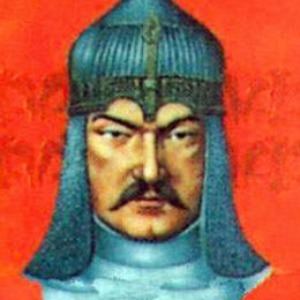Died c. 1036 Name Seljuk Seljuk | House Seljuq dynasty | |
 | ||
The rise and fall of the seljuk empire
Seljuk (Persian: سلجوق, Saljūq; also Seldjuk, Seldjuq, Seljuq; died c. 1038) was the eponymous hero of the Seljuq Turks. He was the son of a certain Toqaq surnamed Temür Yalığ (meaning "of the iron bow") and either the chief or an eminent member from the Kınık tribe of the Oghuz Turks. In 985, the Seljuq clan split off from the bulk of the Tokuz-Oghuz, a confederacy of nine clans long settled between the Aral and Caspian Seas. They set up camp on the right bank of the lower Syr Darya (Jaxartes), in the direction of Jend, near Kzyl Orda in present-day south-central Kazakhstan. There, in 985, Seljuk converted to Islam.
Contents
The names of his four sons — Mikail (Michael), Isrâîl (Israel), Mûsâ (Moses), and Yûnus (Jonah) — suggest previous acquaintance with either Khazar Judaism or Nestorian Christianity. According to some sources, Seljuk began his career as an officer in the Khazar army.
Under Mikâîl's sons Tuğrul and Çağrı, the Seljuqs migrated into Khurasan. Ghaznavid attempts to stop Seljuqs raiding the local Muslim populace led to the Battle of Dandanaqan on 23 May 1040. Victorious Seljuqs became masters of Khurasan, expanding their power into Transoxiana and across Iran. By 1055, Tuğrul had expanded his control all the way to Baghdad, setting himself up as the champion of the Abbasid caliph, who honored him with the title sultan. Earlier rulers may have used this title but the Seljuqs seem to have been the first to inscribe it on their coins.
The great seljuk empire
Legacy
Selçuk has been a common masculine given name by Turkish people since Seljuq times.
